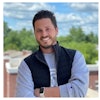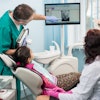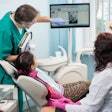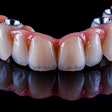
Will the state of Washington be next to adopt a midlevel provider model in an attempt to improve access to dental care for its underserved populations?
It appears that way, given the actions of the Washington State Dental Association (WSDA) and the Washington State Dental Hygienists Association (WSDHA). As was the case in Minnesota, however, the two organizations are taking quite different approaches.
“We are not trying to create 'minidentists' ... we're trying to go places where dentists don't go.”
— Rebecca Stolberg, R.D.H., M.S.,
associate professor of dental
hygiene, Eastern Washington
University
The need for improved access to dental care in Washington is similar to the need in many other states -- there just aren't enough dentists to serve the state's low-income, minority, and elderly populations, particularly in rural areas (Journal of Dental Education, 2009, 73:2[suppl], pp. 148-160). Dental care among Medicaid children younger than age 20 in Washington is less than 35%, and most of the 3,593 dentists in the state are not treating low-income families or practicing in underserved regions, according to the JDE article.
According to the University of Washington, only areas around the larger cities -- such as Seattle, Everett, Bellingham, Spokane, and Port Angeles -- have enough dentists to meet the local population's needs. Pend Oreille County, for example, in the far northeastern corner of the state, has about 12,000 people in its 1,425 square miles, but only two dentists to serve them. By comparison, King County (home to Seattle and Bellingham) has six times as many dentists per capita.
Another factor is population growth. Washington's population has increased from 2 million in 1945 to more than 6 million today, but the number of dentists hasn't kept up, according to the University of Washington. In fact, about half of Washington's dentists are predicted to retire by 2013.
"In 2007, 72% of dentists over age 56 surveyed by the state of Washington said they would retire within 10 years, which strongly suggests that dental care capacity will be different than today," said David Hemion, assistant executive director of the WSDA.
Expanding the workforce
As a result, Washington has been developing various initiatives to improve access to care for vulnerable populations by increasing the number of dental professionals available to fill the gap, particularly in underserved areas.
In 2007, the state legislature passed a bill creating the Expanded Function Dental Auxiliary (EFDA). Following a three-month training program that focuses on restorations, licensed EFDAs are allowed to perform certain functions under general supervision of a dentist, including coronal polishing, sealant and fluoride treatment, placing and exposing x-rays, and giving patients oral health instructions. They are also authorized to place and carve direct restorations and to take final impressions. The first 35 Washington EFDAs graduated from two colleges in June, and 20 of them are now licensed, according to the WSDA.
And for the past two years, the WSDHA has been pursuing the Advanced Dental Hygiene Practitioner (ADHP) model -- a two-year, graduate-level degree for dental hygienists developed by the American Dental Hygienists' Association (ADHA) that would give those who complete the program license to provide much broader care without the supervision of a dentist, including extractions, pulpotomies, and many types of restorations. The WSDHA plans to introduce legislation in support of that model to the state legislature in January 2011, according to Colleen Gaylord, R.D.H., E.F.D.A., immediate past-president of the WSDHA.
|
WSDA dental therapist proposal In the dental therapist model being considered by the Washington State Dental Association, functions allowed under close supervision of the dentist would include:
Functions allowed under general supervision of the dentist would include:
|
A related pilot project organized by Eastern Washington University is ready to go but has been delayed by funding cutbacks, according to Rebecca Stolberg, R.D.H., M.S., associate professor of dental hygiene at the university. The project, which would take place on a tribal reservation in eastern Washington, would take eight licensed hygienists through a two-year ADHP program at a total cost of about $210,000 -- and supply some much-needed data about the effectiveness of this approach that could be instrumental in the WSDHA's legislative efforts.
"We are not trying to create 'minidentists' or take over the dentists' workload or compete with them," Stolberg said. "We're trying to go places where dentists don't go."
Another level of care?
Now the WSDA is considering a midlevel provider model designed to address the needs of Medicaid populations. In June 2009, the WSDA board of directors approved a proposal to establish a dental therapist model that Stolberg says is very similar to the Dental Health Aide Therapist (DHAT) model in Alaska.
Under the WSDA proposal, following successful completion of a two-year community college program, licensed dental therapists would be employed by community health centers and other programs targeted to helping the working poor and indigent.
"We find in Washington that the most severe access cases are related to adults on Medicaid," said Hemion. "Looking down the road five years, circumstances are evolving that will build a need to create a capacity to treat special needs patients."
Similar to EFDAs, the dental therapists would leave diagnosis, treatment planning, and delegation in the hands of the dentist. However, while EFDAs are allowed to perform some of the functions the dental therapist would perform (under general supervision), their focus is not directly on Medicaid and other underserved populations, Hemion noted.
"It's still early to determine what substantial effect EFDAs will have on reducing the large number of Medicaid-enrolled and uninsured working poor who do not have access to care, but there will be less than 100 entering practice annually for some time," he said. "We expect that both EFDAs and dental therapists will primarily be employed in community health clinic practices or by private dentists serving those populations."
While the ADHP model is intended to address Medicaid and other underserved populations, there are concerns that the educational requirements will restrict the number of hygienists able to attend these programs and delay their entry into the marketplace.
In an article in the Journal of Dental Hygiene (Winter 2009, Vol. 83:I, pp. 36-45), David Nash, D.M.D., M.D., Ed.D., professor of pediatric dentistry at the University of Kentucky, argued that "structuring the ADHP with a postgraduate, master's degree entry level severely restricts the number of expanded scope of practice dental hygienists who could be trained to address the issue of access to care. This extended time period is not required to achieve the basic level of clinical skills necessary to provide the scope of care traditionally expected of a dental hygienist as well as those of a dental therapist."
But Gaylord maintains that the emphasis should be on the quality of education and the quality of care being provided, given that low-income populations often have the most complicated health histories.
"I would hope it would take some time to teach people how to do these kinds of procedures," Gaylord said. "I am more concerned with the quality of the education and the competency of the practitioners than the speed with which we can throw people at the public."
She also doesn't understand why more dental hygienists aren't currently being utilized in underserved areas of Washington, given that they have been allowed to do restorative procedures there (under dentist supervision) since 1971.
"There is a whole chunk of the workforce here that is underutilized," she said. "They do not utilize more than 25% to 30% of the hygienists for restorative procedures now."
In the meantime, in September the WSDA House of Delegates voted to begin a discussion about the dental therapist model with its membership that will last until September 2010. At that point, Hemion said, the House of Delegates will decide whether the association will continue to move forward with the proposal.
"If the House approves it, our intent is to propose this to the state legislature in 2011," he said.
Copyright © 2009 DrBicuspid.com



















